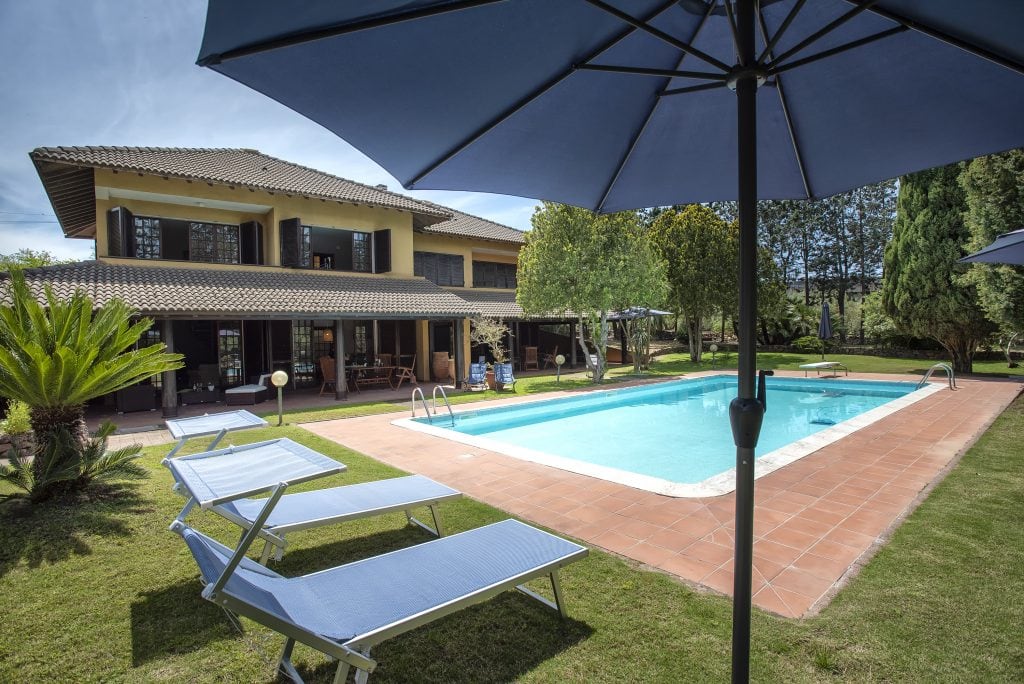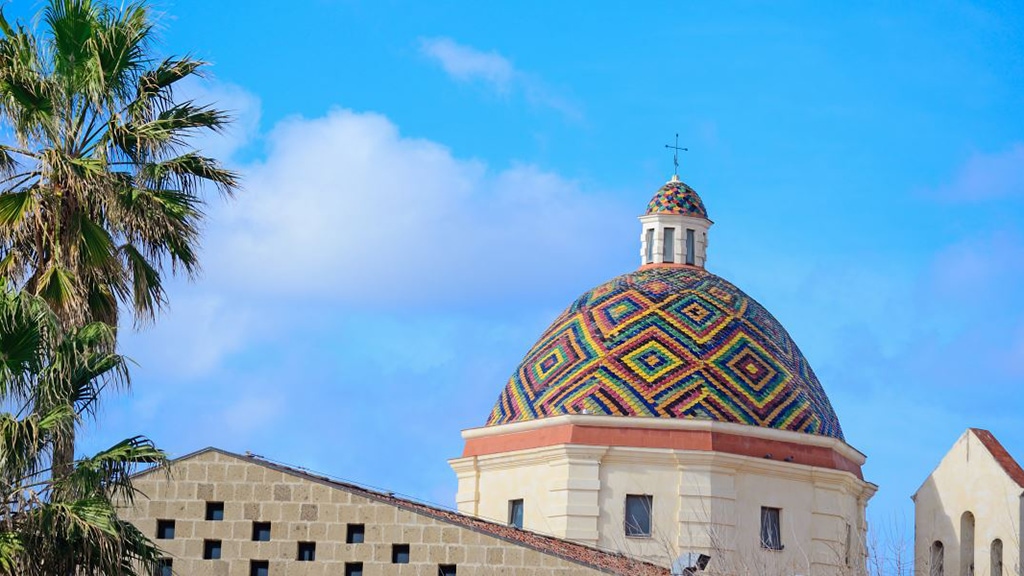
St Michael’s Church in Alghero is its most famous church and one of the city’s landmark buildings.
Of course, the first thing that comes to everyone’s mind is the famous multicoloured dome that towers over the rest of the building, but the ancient walls conceal much more than you might imagine.
Come with us into Alghero’s most famous church and discover magnificent works of art and a history to be experienced.
Historical background
St Michael’s Church in Alghero, as we see it today, is considered a magnificent example of Baroque art, but its present appearance is the result of many transformations and events that have taken place over time.
In fact, in the beginning there was another building on the site, dedicated to St Michael himself, which was at the head of a vast cemetery area that reached as far as Porta San Giovanni.
The story begins in the late 1500s, when Bishop Baccallar decided to donate the old church to the Jesuits with the commitment to turn it into a college run by the Jesuit society.
Thus, in 1589 work started on the college and the cemetery was moved next to the cathedral.
Instead, the new church, the one that took on the connotations we know so well, was built between 1661 and 1675 on the pre-existing structure.
But the work was only completed in the early 18th century thanks to the generous donation of the Spanish army captain, Geronimo Ferret.
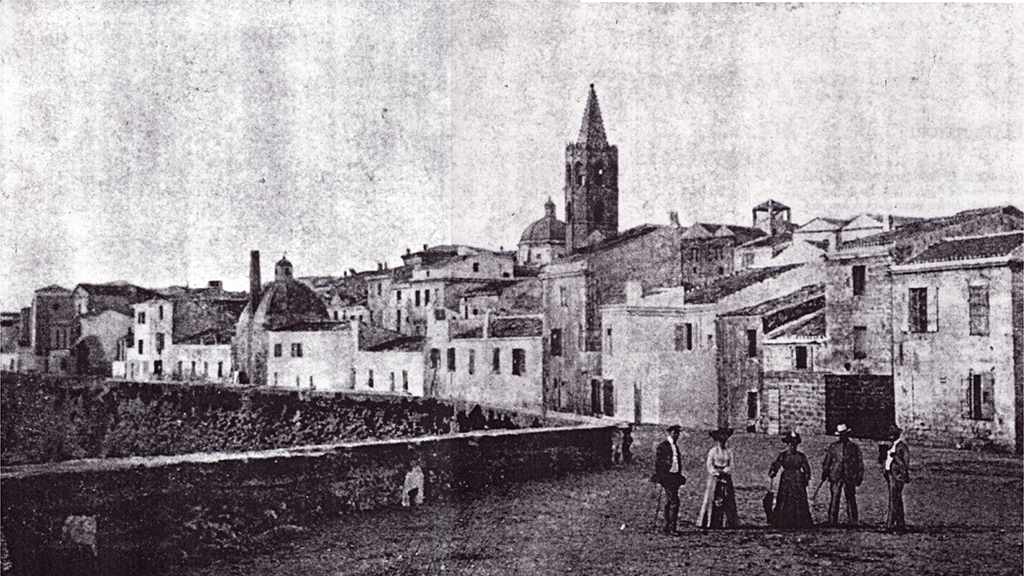
In memory and thanksgiving of the saving donation, the plaque walled on the right side of the church was dedicated to him.
However, in 1774, the Jesuit society was dissolved at the behest of Pope Clement XIV.
The college, which was short-lived, was used as a barracks until 1950, so relatively recent times before which there were no significant changes.
The change came in 1950 with the return of the Jesuits to Alghero, who bought the building to use it for various purposes, including housing a library and the volunteer association that runs it.
Obviously, several restorations have been necessary over time, the last of which took place in 2007.
Let’s take a tour inside to discover what it hides.
The Interior of the Church
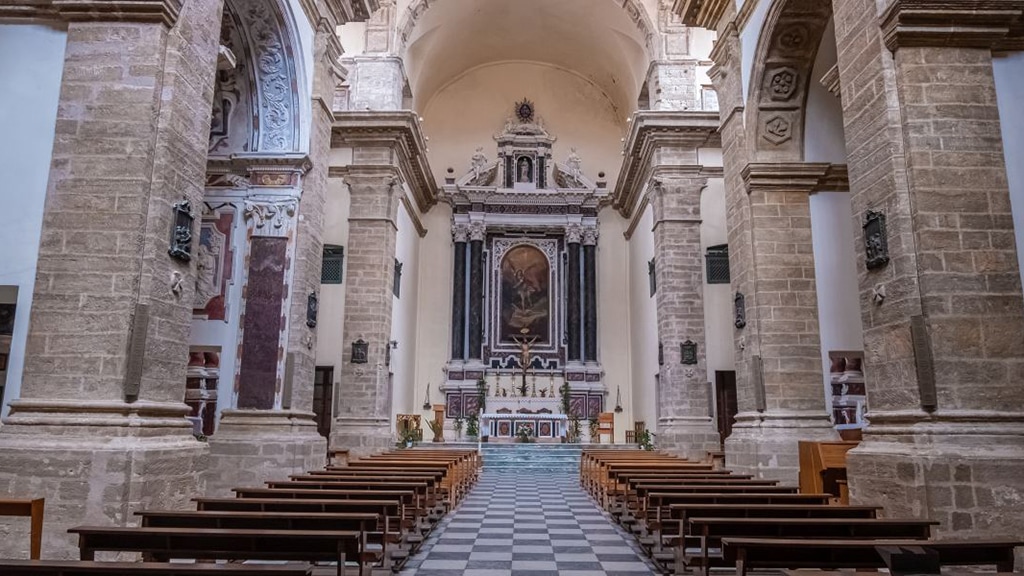
As soon as one crosses the threshold, the first thing one notices is perhaps the high altar, where there is an imposing Crucifix by a Spanish author dating back to the 18th century.
In addition to the crucifix, on the altar is a large painting dedicated to the Archangel Michael, patron saint of Alghero, to whom the entire church is dedicated.
Speaking of the altar, one notices that behind it, the plan is oblique to the rest of the building.
Could it be because of the structure of the pre-existing church?
Looking up, one notices instead the characteristic barrel-vaulted roof.
A further detail, which certainly does not escape the eye, is the fact that the entire architecture is punctuated by structural stone elements that create fascinating contrasts.
On either side of the single nave of the church are chapels.
We will now discuss the most representative ones.
The chapels of St Michael’s Church
Let us start from the left side, where the chapel dedicated to the Immaculate Virgin Mary can be appreciated both for its barrel vaulting and for the paintings of scenes from the her life.
But the most striking is certainly the main one, with the classic representation of the Virgin with her feet on the moon surrounded by angels.
The chapel dedicated to St Ignatius of Loyola is most famous for the monumental altar around the large painting of St Ignatius in ecstasy, made in 1678, during the Baroque period.
We move on to the right side of the church where we find:
The chapel of St Francis Xavier with the iconic painting of the saint walking. Above the painting is the inscription “Satis, Domine, Satis”, which means “Enough, Lord, Enough”.
To the left of the chapel is the famous polychrome marble plaque commemorating Geronimo Ferret as a thank you for being a benefactor of the church and college.
Also on the left side of the church is the chapel dedicated to St Michael with the large statue depicting him defeating Satan, a theme dear to the artistic repertoire related to the Christian religion.
Finally, the chapel dedicated to Our Lady of the Arrow houses a large painting dating back to 1652 and below it a niche with a simulacrum of the Virgin of Valverde.
The peculiar thing is that this detail is linked to another cult of Alghero. In fact, the first small church built where the famous sanctuary of Our Lady of Valverde stands today, a few kilometres from the city, was dedicated to Our Lady of the Arrow.
Façade and dome of St Michael’s Church
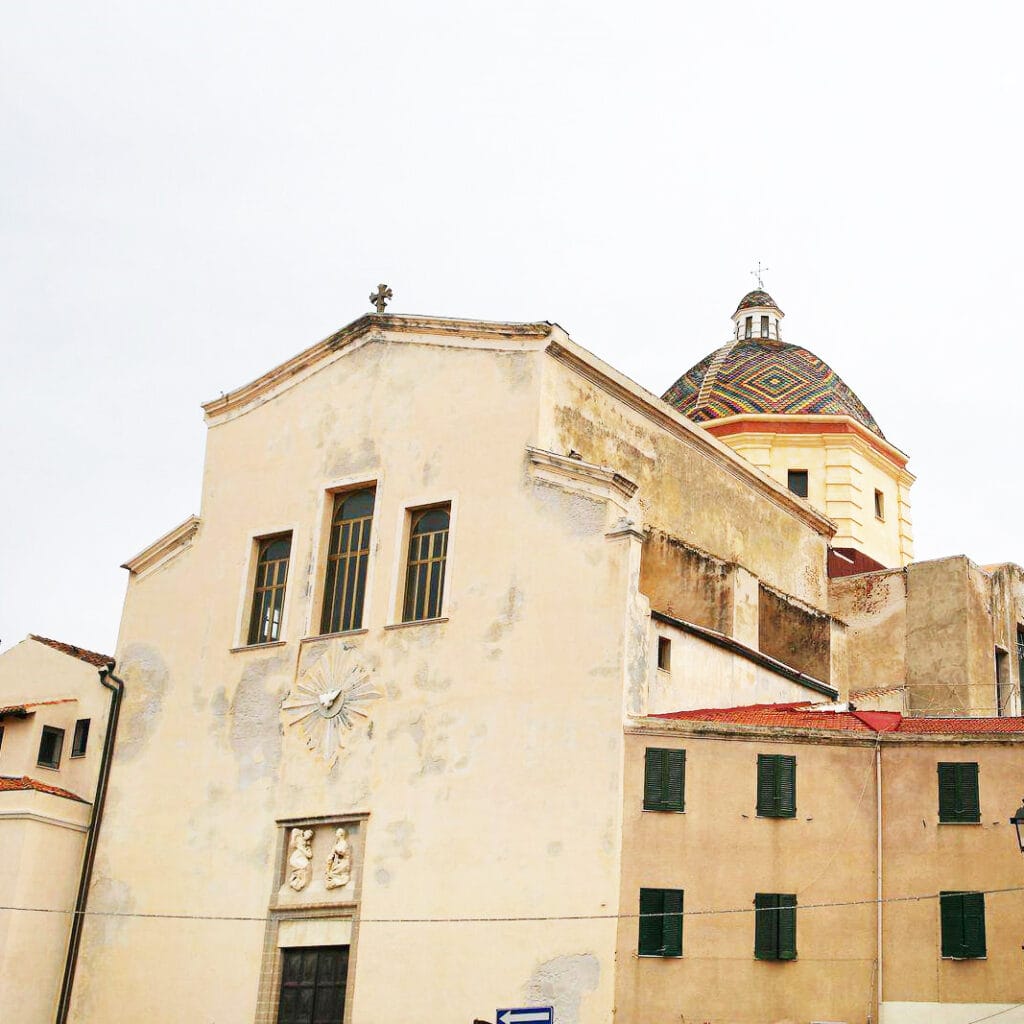
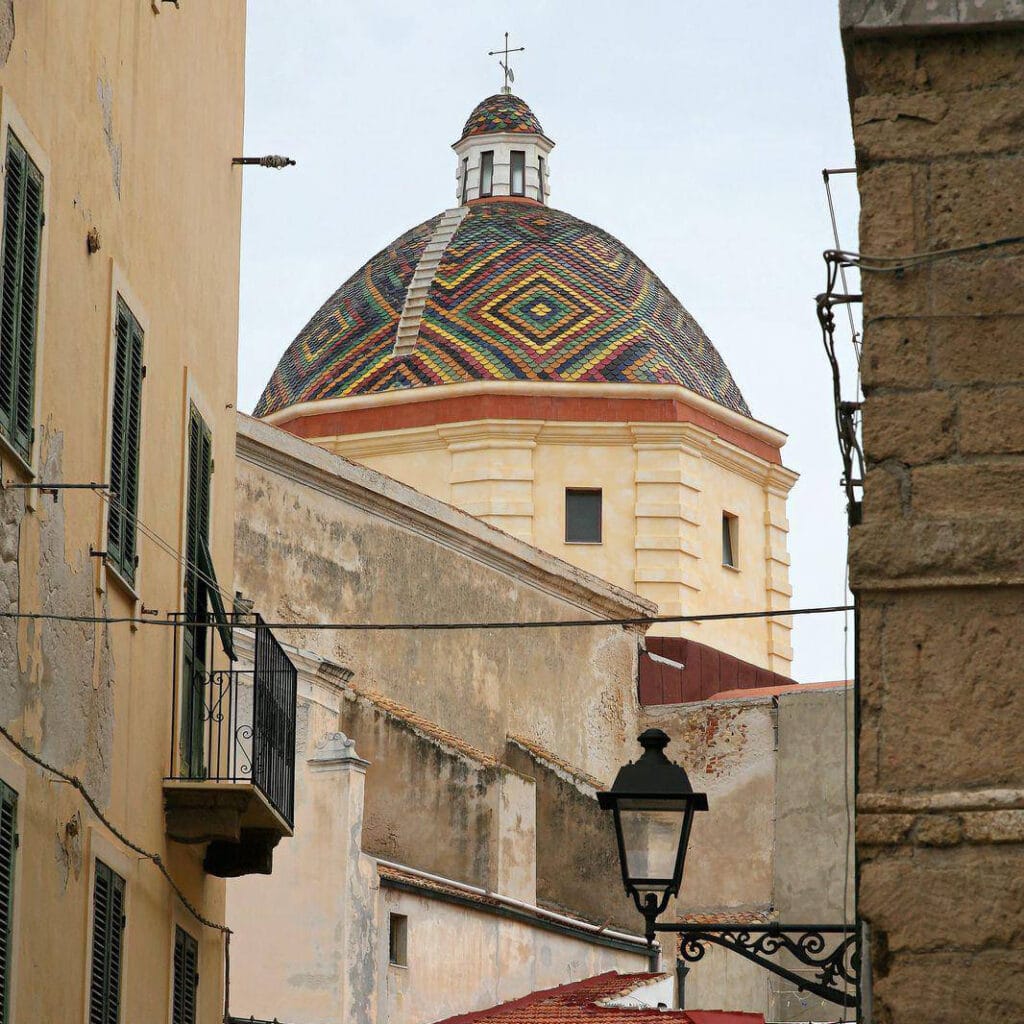
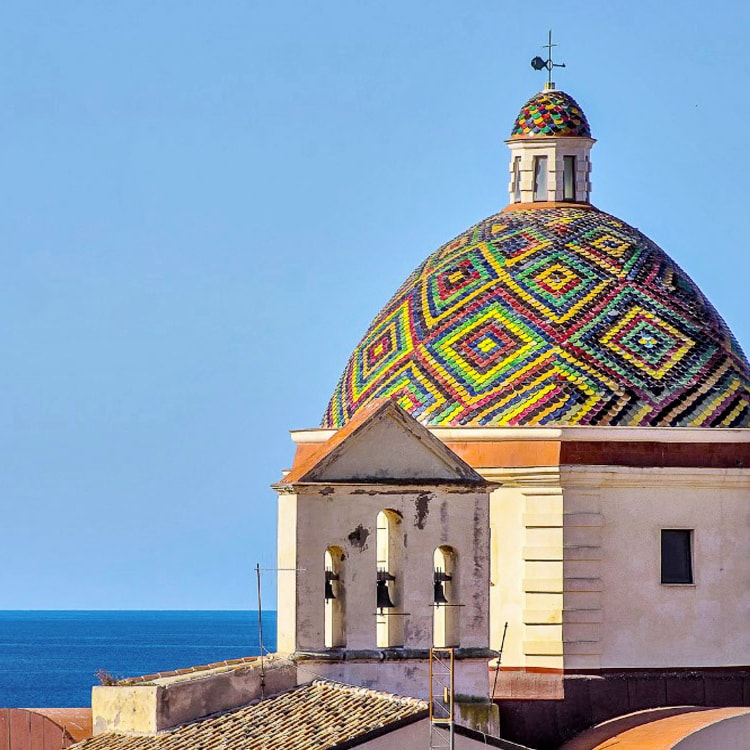
While on the inside one is struck by works of art and the contrast between whitewashed masonry and stone parts, on the outside one is captivated by other equally fascinating contrasts.
The façade can be appreciated for the religious modesty of its decoration. The wall appears smooth, while three large windows and a wooden portal give a sober movement to the structure.
But the simplicity of this architecture emphasises the bas-reliefs, of particular importance as they are dedicated to the sacred moment of the Annunciation.
While the high relief placed under the windows, on the other hand, represents the Holy Spirit.
What is most fascinating about the building’s exterior is the contrast between the sobriety of the architecture and the iconic coloured dome, which has become a symbol of the city.
Entirely covered in brightly coloured bricks, the decoration of the dome was carried out in 1950 and faithfully follows the design by Antonio Simon Mossa and Filippo Figari.
How to get to the St Michael’s Church in Alghero
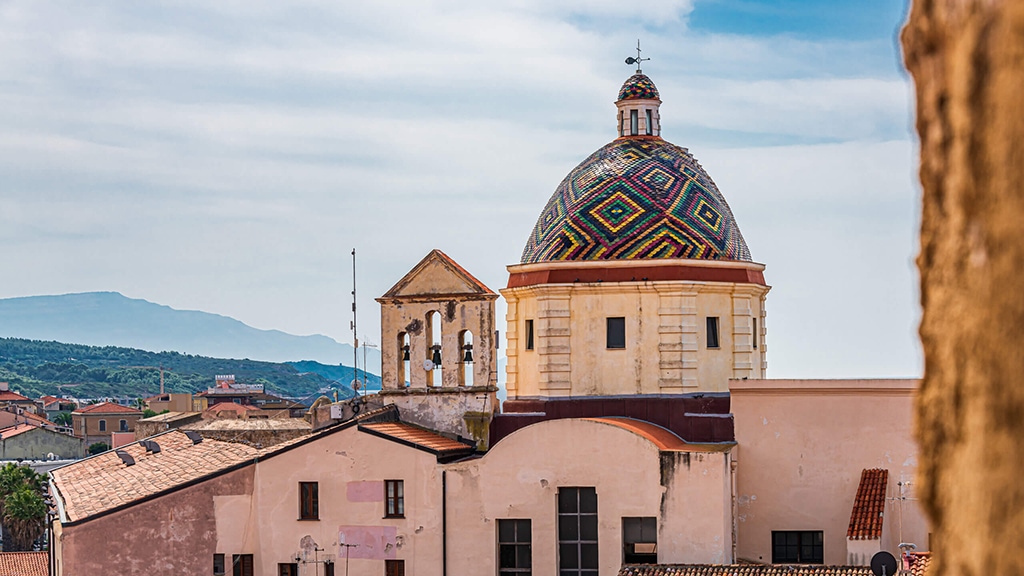
The historic St Michael’s Church in Alghero is located in the historical centre, on Via Carlo Alberto.
Precisely opposite Piazza Ginnasio, it is very close to Piazza Vincenzo Sulis.
It can be easily reached from anywhere in Alghero and is a perfect destination for a relaxing stroll.
Admission to the church is always free and you can admire the works of art inside free of charge.
Would you like to visit the magnificent St Michael’s Church and all the most important monuments of the place?
Plan your stay at Domus 81!
